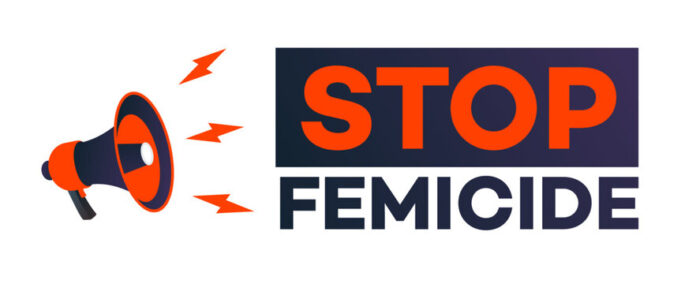
In 2021, at least 4,473 women were victims of femicide (also known as feminicide) in 29 countries and territories of the region, according to the latest official data that countries reported to the Gender Equality Observatory for Latin America and the Caribbean (GEO) of the Economic Commission for Latin America and the Caribbean (ECLAC).
This represents at least 12 women per day who die violent, gender-based deaths in the region, the institution warns.
“For 15 years, Latin American and Caribbean States have recognized the seriousness of femicidal violence and the gender-related killing of women, which has been expressed in the institutional context through the adoption of laws and protocols and the development of specific institutional frameworks.

Despite these advances, femicide or feminicide persists and there are no clear signs that it is declining,” ECLAC says in a new report by the GEO.
In 2021, of the 18 countries and territories in Latin America that provided information, 11 had a rate equal to or higher than 1 femicide victim for every 100,000 women.
The highest femicide rates in Latin America are seen in Honduras (4.6 cases for every 100,000 women), the Dominican Republic (2.7 cases for every 100,000 women), El Salvador (2.4 cases for every 100,000 women), Bolivia (1.8 cases for every 100,000 women) and Brazil (1.7 cases for every 100,000 women).
In the Caribbean, 28 women in total were victims of lethal gender violence in the 11 countries and territories that provided information corresponding to 2021.
Belize and Guyana had the highest femicide rates in the Caribbean (3.5 and 2.0 for every 100,000 women, respectively), while the highest absolute number of victims was recorded in Jamaica (9 victims in 2021).
“The figures that we are presenting on femicides in Latin America and the Caribbean are unacceptable.
Our obligation is to redouble efforts so that the women and girls of our region can truly exercise their right to live a life free of violence and discrimination,” José Manuel Salazar-Xirinachs, ECLAC’s Executive Secretary, said in the framework of the International Day for the Elimination of Violence against Women, which is commemorated each year on November 25 and which launches 16 days of activism through to December 10, which is International Human Rights Day.
Adolescent girls and young women between 15 and 29 years of age make up the age group in which the highest proportion of femicide cases is concentrated, according to data from 16 countries and territories of the region between 2019 and 2021.
More than 4% of all these crimes are committed against girls under the age of 14.
In addition, in 2021, at least 781 children, adolescents and other dependents lost their mother or caregiver due to femicide, just in the 10 countries of the region that have data on this matter.
“This number reveals the huge impact that gender violence has, not only on the women who are victims, but also on their families, the community and society as a whole,” ECLAC emphasizes.
“Producing quality statistical data on femicide or feminicide requires going beyond counting the number of victims,” the United Nations regional commission sustains, adding that “for those data to be used in designing comprehensive public policies to address violence against women and girls, a series of key data points must be known, including the characteristics of victims and aggressors, the relationship between them, the context in which these crimes took place, the means used in the killing and whether the victim had previously filed a report about the aggressor, among other information.”
As the GEO report explains, ECLAC is providing support to several countries in the region to improve their administrative records on femicide, and it observes their overall strengthening in terms of reliability, which enhances comparability at the regional level.
A factor that must be noted, the Commission clarifies, is that the information on femicides is being constantly updated by countries.
This is mainly related to the evolution of judicial investigations, which means that figures from previous years are subject to correction, which may modify the total figures that ECLAC publishes each year at the regional level.
Two weeks ago, at the XV Regional Conference on Women in Latin America and the Caribbean, ECLAC’s Member States committed themselves to achieving a transformative recovery with gender equality centered on the sustainability of life and moving towards the care society.
At this gathering, delegates agreed to “promote the adoption and implementation of laws, policies, comprehensive and multisectoral action plans and educational awareness-raising programs to prevent, address, punish and eliminate all forms of gender-based violence and discrimination against women, adolescent girls and girls in all their diversity, in different areas and manifestations, including harmful practices such as female genital mutilation, child marriage and early unions.”
Femicide is simply the most extreme expression of inequality, discrimination and the multiple forms of violence against women and girls.
For example, according to specialized national surveys in the region, between 60% and 76% of women (around 2 out of every 3) have been victims of gender-based violence in distinct areas of their lives.
In addition, on average, 1 in 4 women has been or currently is a victim of physical and/or sexual violence perpetrated by someone who was, or is, their partner, which entails the risk of lethal violence.
At the same time, early and forced child marriages and unions are a harmful practice and a manifestation of gender violence that persists and is widespread in the region, affecting 1 in 5 girls.
“Achieving the autonomy of women and girls in all their diversity is one of the commitments assumed by the region’s countries in the framework of the 2030 Agenda for Sustainable Development.
Forging a care society and a new development model that puts the sustainability of life at the center will only be possible if the Sustainable Development Goals are fulfilled, and the right of all women and girls to live a life free of all forms of violence is guaranteed,” José Manuel Salazar-Xirinachs concluded.
Advertise with the mоѕt vіѕіtеd nеwѕ ѕіtе іn Antigua!
We offer fully customizable and flexible digital marketing packages.
Contact us at [email protected]














JUSTICE FOR TESSA BARTHLEY!!
OPEN BACK THE CASE
JUSTICE FOR TESSA BARTHLEY!!!
OPEN BACK THE CASE
JUSTICE FOR TESSA BARTHLEY!!!
OPEN BACK THE CASE
JUSTICE FOR TESSA BARTHLEY!!!!
OPEN BACK THE CASE
JUSTICE FOR TESSA BARTHLEY!!!!
OPEN BACK THE CASE
JUSTICE FOR TESSA BARTHLEY!!!!!
OPEN BACK THE CASE
JUSTICE FOR TESSA BARTHLEY!!!!!
OPEN BACK THE CASE
JUSTICE FOR TESSA BARTHLEY!!!!!
OPEN BACK THE CASE
JUSTICE FOR TESSA BARTHLEY!!!!
OPEN BACK THE CASE
Emergency Medical Services were there attending to Ms. Barthley. There was blood on her neck. The detectives spoke with Bowen. He handed over to Sergeant Edwards a black PIETRO BERETTA .25 PISTOL which contained 8 rounds of ammunition. The police recovered a spent shell and other items from the scene of the incident. Bowen was detained.
a black PIETRO BERETTA .25 PISTOL
a black PIETRO BERETTA .25 PISTOL
a black PIETRO BERETTA .25 PISTOL
a black PIETRO BERETTA .25 PISTOL
a black PIETRO BERETTA .25 PISTOL
a black PIETRO BERETTA .25 PISTOL
a black PIETRO BERETTA .25 PISTOL
a black PIETRO BERETTA .25 PISTOL
a black PIETRO BERETTA .25 PISTOL
a black PIETRO BERETTA .25 PISTOL
a black PIETRO BERETTA .25 PISTOL
a black PIETRO BERETTA .25 PISTOL
a black PIETRO BERETTA .25 PISTOL
a black PIETRO BERETTA .25 PISTOL
a black PIETRO BERETTA .25 PISTOL
a black PIETRO BERETTA .25 PISTOL
a black PIETRO BERETTA .25 PISTOL
a black PIETRO BERETTA .25 PISTOL
a black PIETRO BERETTA .25 PISTOL
a black PIETRO BERETTA .25 PISTOL
Bowen, a lawyer and accountant by profession, was charged for the murder of Tessa Barthley. Ms. Barthley was SHOT IN HER NECK on 16 th December 2003 outside Bowen’s office at Nevis Street, St. John’s. She died on 23 rd December 2003.
They heard what sounded like a firecracker. Shortly thereafter, Constable Charles went towards his vehicle which was parked in the vicinity of Bowen’s office. He saw Bowen sitting on the steps of the building which housed his office. He saw Ms. Barthley lying on the ground not far from his motor car.
Pearl “FOOTS” Quinn
Gladys Potter EMPTY HEAD
Franz DeFreitas G-R-E-A-T-F-U-L
Cleon DON’T TELL DADDY HOWDY
Pringle CA-CAPA-TI-TAH and MASKses
Serpent FARMing FOOL & DICTATOR
Peter Redz CAN’T TALK
Jonathan “VOTE ALP”
King Lyadd Lovell Limpy Joe IMF
Alex ABOUT TO EXIT
Sean LAZY FORNICATOR
APOSTLE SHUGY SIMON
Alister “inTERllectual” Thomas
BUT NONE OF THEM EVER!!!! TOOK THE LIFE OF AN UNARMED BLACK GIRL!!! 😢 😭 😢 😭
Comments are closed.